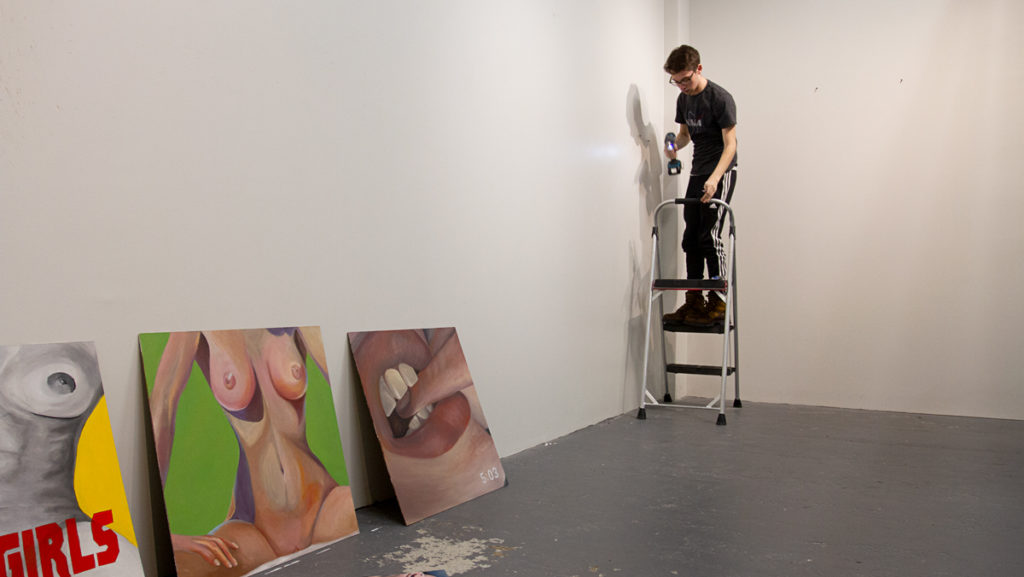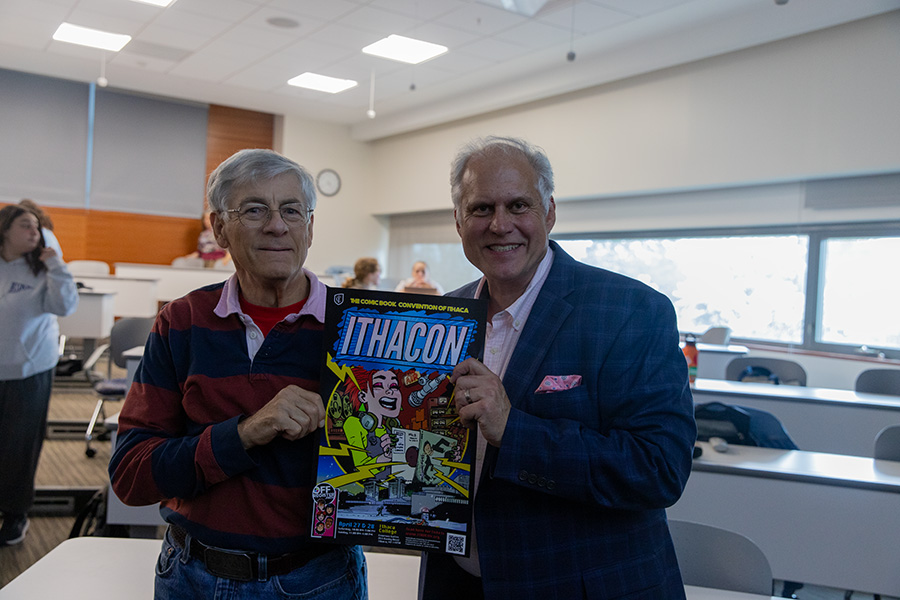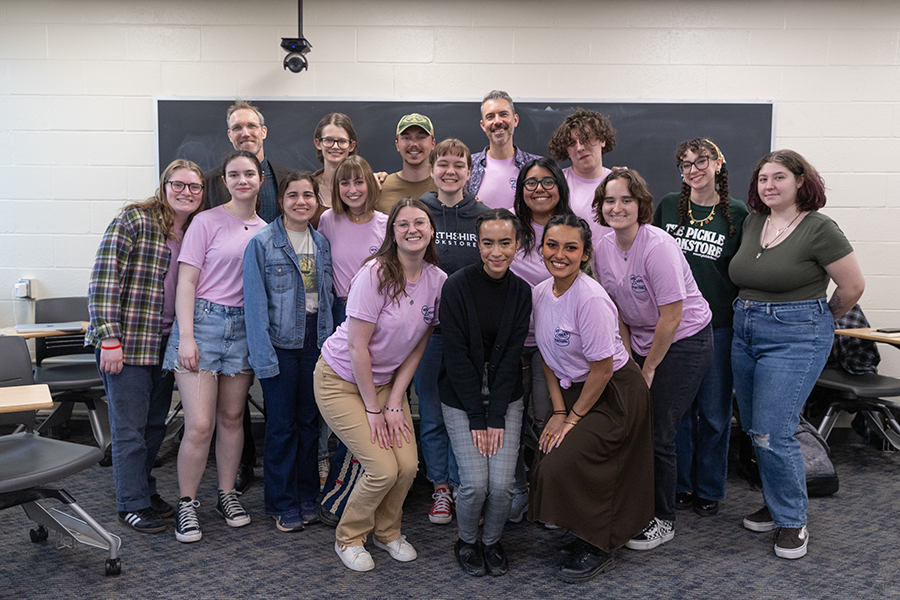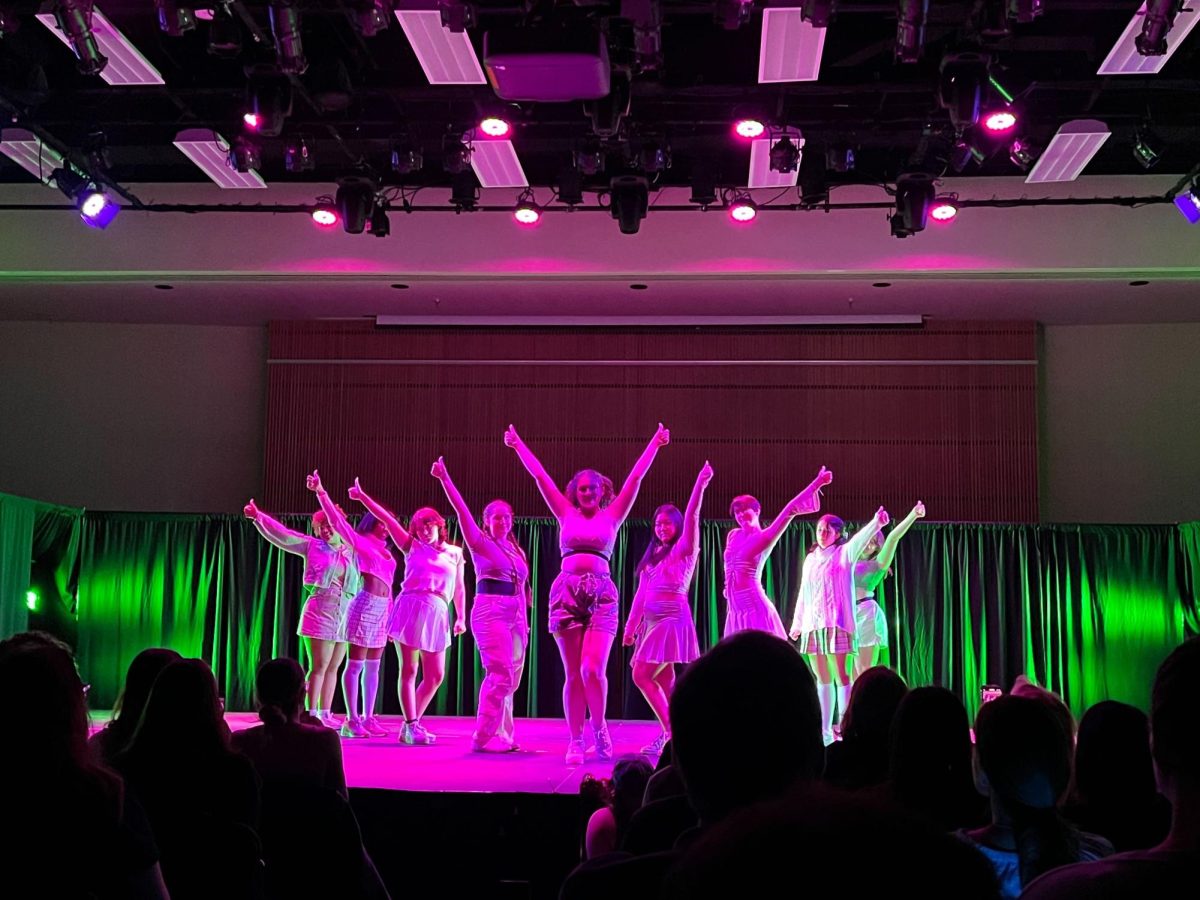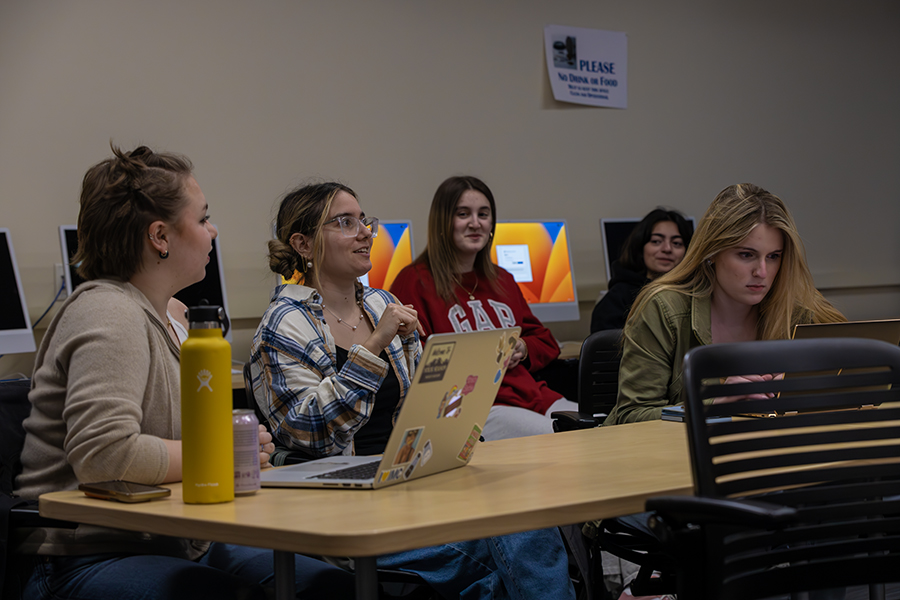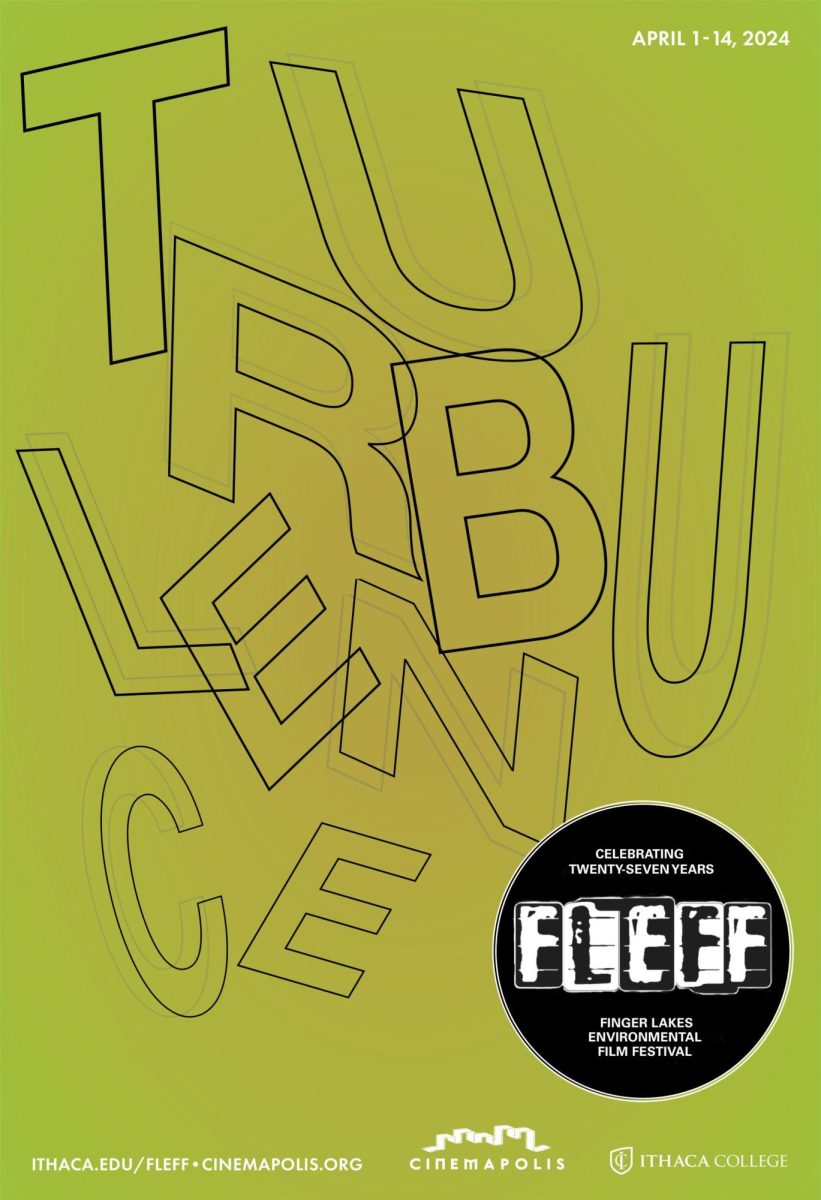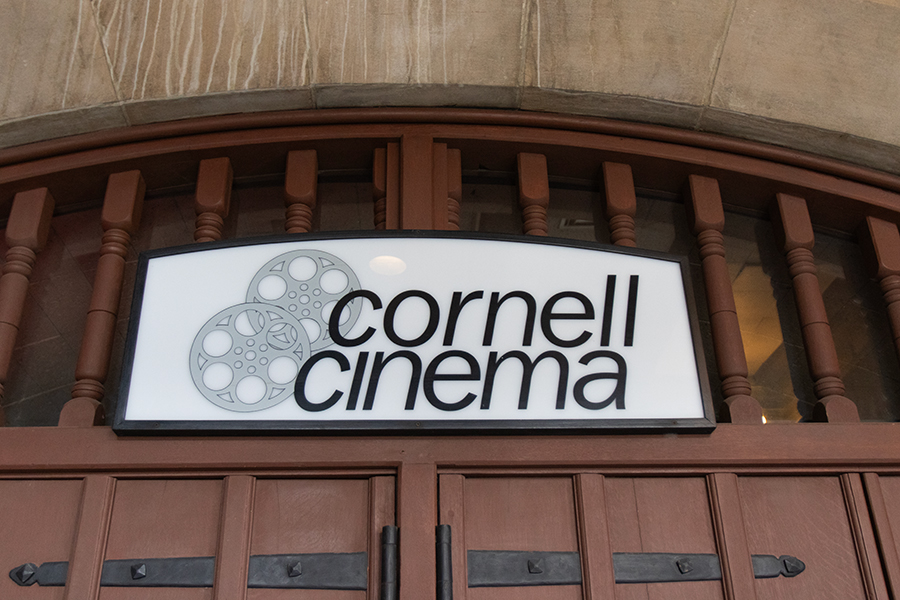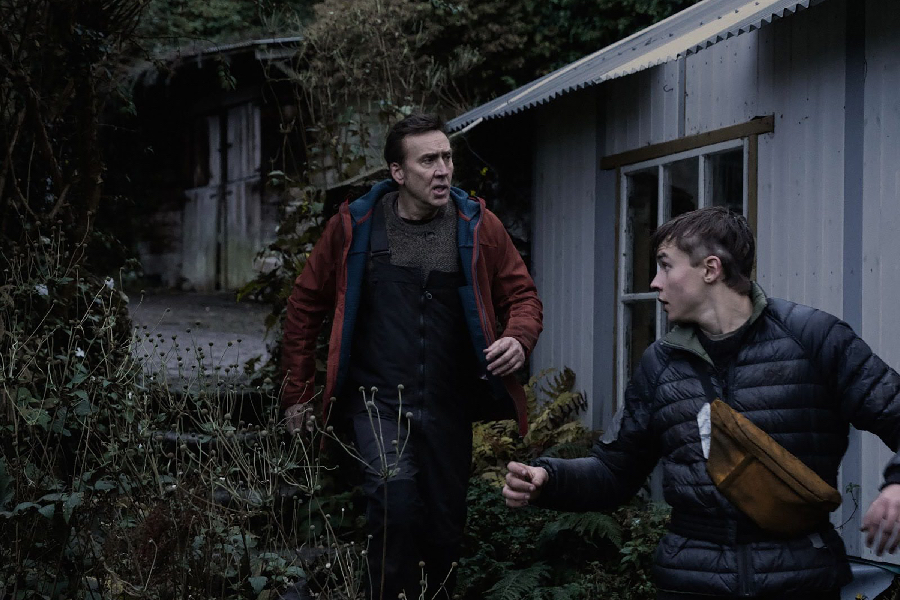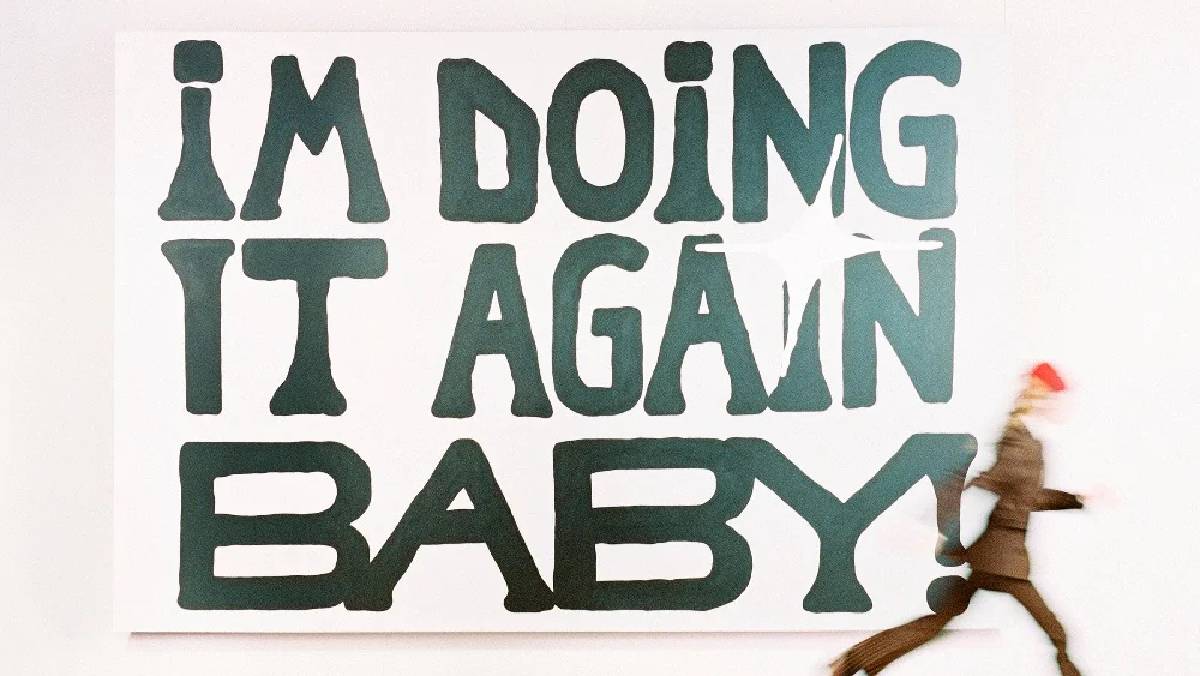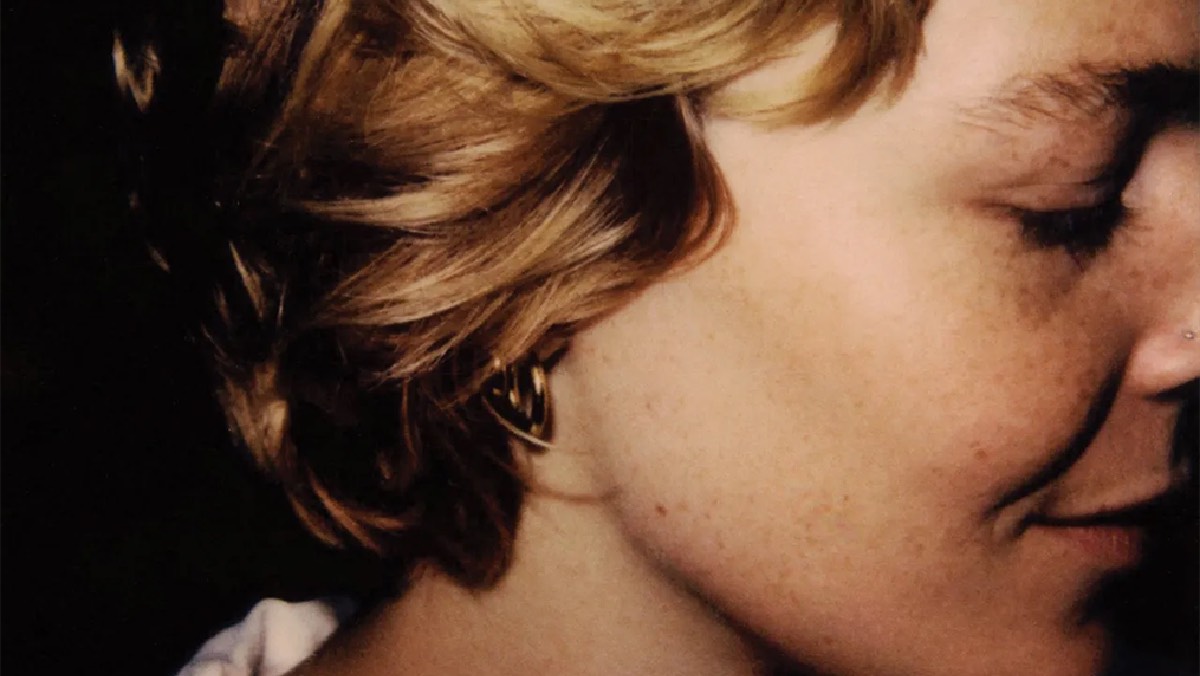Across the street from Ithaca College at the Creative Space Gallery (CSG), art students are preparing for the chance to showcase the work they’re proudest of. The CSG is about to open its doors for one of the last times for an exhibition called “What Are You Looking At?” The initial donation that funded the gallery space is running out at the end of Fall 2019, and the future of a gallery space for the art department is uncertain.
The exhibition, which is being held from 5 to 7 p.m. May 3, is entirely put together by Theories of Art Practice, a required class for B.A. and B.F.A. art majors. Bill Hastings, associate professor in the Department of Art, teaches the class, which is made up of only five students this semester — juniors Luke Bonadonna, Emily Goodstein, Kalina Hertafeld and Kate Rockefeller and senior Matt Palmeri. This show will be one of the CSG’s last-ever exhibitions. There will be at least two more exhibitions in the space next semester.
The CSG first opened in 2015 after an anonymous donor gave money to the art department to be used for a permanent gallery. Hastings said the donor had hoped that the college might continue to fund the gallery when the donation ran out, but it’s uncertain if this will happen. He said that it’s a money issue and that he thinks the college doesn’t necessarily see an expensive permanent gallery space as a great financial investment.
“The donor had a set amount of time and funds — it’s not an endless money scenario,” Hastings said. “They were hoping, and still are hoping, that this was a seed that was planted that shows the school who we are and what we do, and the school would kind of pick up from there. The seed’s done well, but it hasn’t flourished into a mature plant.”
Unless the art department gets more donors or receives extra funding from the school, the CSG will close in December. Carla Stetson, associate professor and chair of the Department of Art, said the art department is in very early talks with the administration about what will happen next year when the funding runs out. There are different options, like pop-up galleries in odd spaces downtown.
“There’s going to be something,” Stetson said. “We just don’t know what yet.”
Michael Richardson, interim dean of the School of Humanities and Sciences, said he is still in conversation with the Stetson and Hastings about the possibilities of procuring gallery spaces on or off campus. He said he is committed to continuing to provide opportunities for art students to showcase their work.
At first, the gallery was located at 215 E. State St. on The Commons and was open all year long, displaying art exclusively from Ithaca College students, faculty and alumni. Previously, the art department did not have its own gallery space, instead renting pop-up spaces downtown for short periods of time.
At the time the CSG opened, it was the first time the department had a permanent, always-open space to display its work outside the cramped and out-of-the-way Cerrache Center. It garnered foot traffic due to its convenient location on The Commons and connected student artists to the broader Ithaca community.
A year later, in May 2016, the gallery on The Commons had to close because the college was relying on the finite donation to pay for the lease and could not secure a long-term lease that the landlord wanted.
Uncertainty is a recurring theme in the art department, from the title of the show to the future of the gallery space. Currently there is neither a concrete solution to the lack of a permanent gallery space or to the overflowing Cerrache Center. Hastings discussed multiple possibilities for next spring, from pop-up galleries downtown to a room in the Campus Center, but, right now, they’re just ideas and hopes.
“We would love nothing more than to have a student-run gallery where we could allow students to take risks, do installations, get themselves out there,” Hastings said. “We’d like to increase dialogue and communication between artists and nonartists. It’s empowering for the students to display art and be vulnerable.”
In early 2017, the CSG moved up to Suite 50 of the South Hill Business Campus, which is directly across from the college’s main campus entrance. The location serves as an overflow for the Cerrache Center, a cramped building that houses the art department and that professors and students have been complaining about for decades. Art classes use the CSG to view student artwork for critiques, learn how to install work and display pieces that don’t fit in Cerrache. Junior art major Emily Goodstein said that losing this large space will be detrimental to the quality of the art students’ educations. Art hung in Cerrache is difficult to view due to the narrow hallways and lack of space, in contrast to the wide and open gallery space off campus.
“The facility on campus just doesn’t have the space for people to have creative freedom to choose how they want to display their work,” Goodstein said. “Without this space and being limited to the basement under the football locker room, it really hinders our education and is super limiting.”
A handful of students in independent studies use the gallery throughout the semester as a studio space, like junior art major Kate Rockefeller. She spent much of her time in the CSG this semester and said she was grateful to have had the space for so long.
“I’ve been working in that space all year, working my ass off painting every day,” said Rockefeller. “I practically live in there. It’s an isolated space, it’s open, it’s like a gallery space, so when I’m done with a piece of work, I can hang it on the wall and see what it looks like, as opposed to Cerrache where you’re so close that you can’t even back up from the walls to see what your work would look like if it was hung.”
For this exhibition, each Theories of Art Practice student will display three cohesive pieces of work and invite one other artist outside the class to do the same. The show doesn’t have an overall theme; instead, it gives the artists chances to display whatever they’re most proud of. Rockefeller has been working on an independent study this semester — a series of paintings about the female gaze and how women choose to portray themselves on social media. She said she plans to hang some of them vertically to mimic scrolling through a Tumblr or Instagram feed.
Junior art major Kal Hertafeld will be showing her surreal photography that places miniatures into surreal landscapes, warping scale and perspective.
“There’s going to be a large range of mediums and concepts,” Hertafeld said. “We want to give students in the show the opportunity to display whatever they’re working on that they feel most passionate about.”
The students get involved in every aspect of putting on the show, from choosing the title to sanding the floors.
“Having them see all these steps puts them in a stronger connection to where their work goes and what goes into showing it,” Hastings said. “What’s the exhibition going to be like? What’s the ideal space? What do you need within the space? They’re thinking about all the components and how they function.”
While a large part of Theories of Art Practice is putting on the exhibition, the class focuses on preparing students for lives as artists after college. Often, it turns into a group therapy session where the five voice their anxieties about artist life, from wondering if people will understand their work to what they’re going to do after graduation. Senior art major Matt Palmeri said the class has been beneficial to him.
“It explains a lot of anxieties that I face with my work — will people like what I made? I don’t feel like I’m doing this right,” Palmeri said.
Rockefeller said the class is different from any others offered in the art department due to its casual, conversational atmosphere.
“It’s pretty much just the five of us sitting around in the art lounge just talking about art and how we feel as artists and the struggles we all kind of go through together,” Rockefeller said. “It’s really reassuring and nice, but also serious talk about what we’re gonna do after school — how to exist as a professional artist in the real world.”


